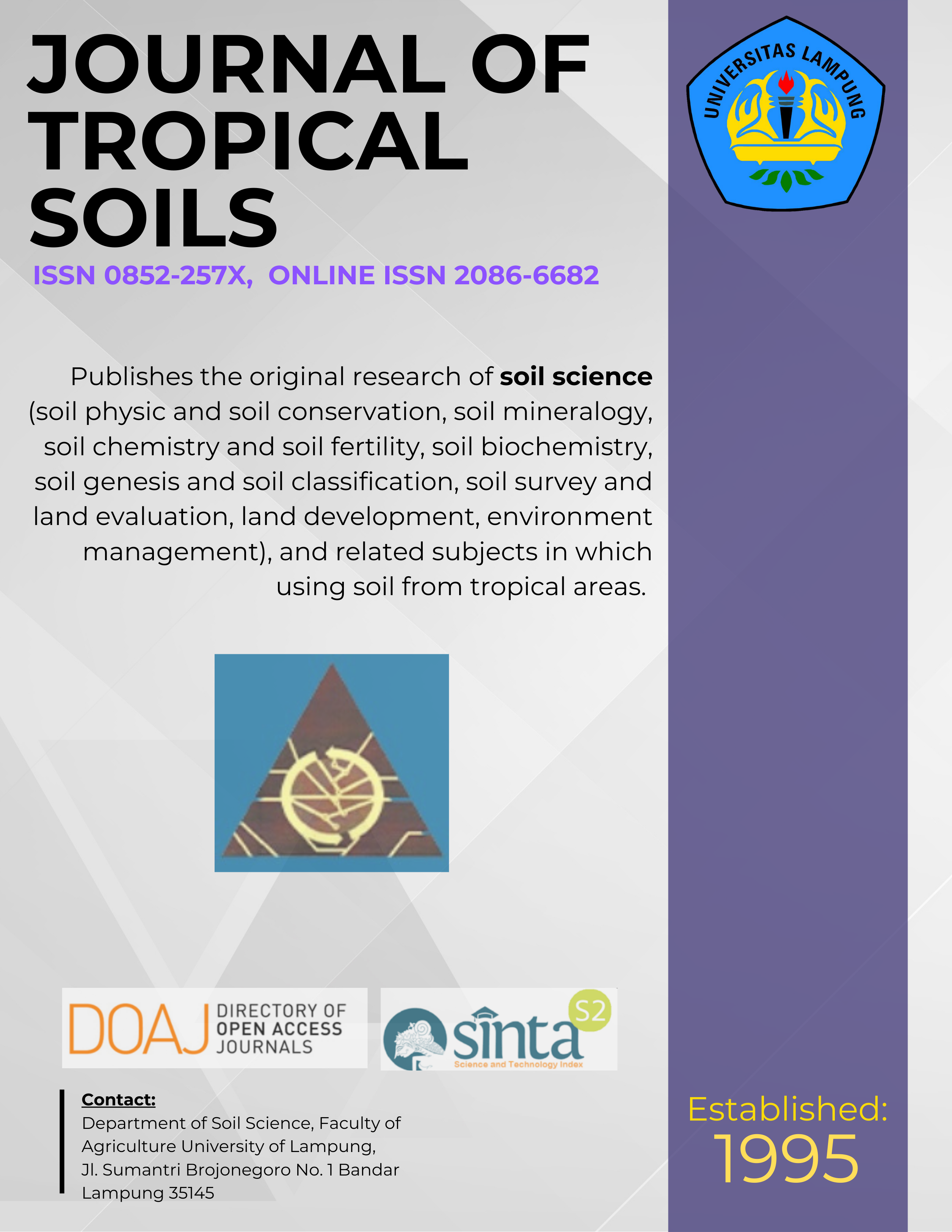Utilizing Cocoa Rind as Organic Fertilizer to Support Sustainable Agriculture
Main Article Content
Abstract
The main key in choosing manure is the level of ripeness, the ratio of Carbon and Nitrogen (C/N) and the Nitrogen, Phosphorus, Potassium (NPPt) contents. So far, the farmers have not effectively utilized organic materials as fertilizers in agricultural lands. Organic materials which can be used include agricultural waste and animal waste. The existence of alternative fertilizers and in order to support the development of sustainable agriculture, utilizing agricultural waste as the materials to make organic fertilizers is encouraged. Organic fertilizers can be in the forms of manure, compost, and the combination of both. The research was aimed to study the NPPt content in compost from cocoa rind and cow waste. This research was done in May – September 2015 in Sub-district Luwuk, District Banggai and in the Laboratory of Chemistry and Soil Fertility, Department of Soil Science Faculty of Agriculture, Hasanuddin University, Makassar. The experiment was conducted in a Completely Randomized Design (CRD). The experiment contained one factor with three treatments, which were repeated 3 times; thus, there were 9 treatments units. The treatments were comparison dosages of cocoa rind and cow waste, i.e. P1 = 50 kg of cocoa rind : 10 kg of cow waste; P2 = 50 kg of cocoa rind : 20 kg cow of waste; P3 = 50 kg of cocoa rind : 30 kg of cow waste. Data were analysed by comparing the average of NPPt element in cocoa rind compost and cow waste. Data was then analyzed statistically by One Way Anova (One Way Variant Analysis) by using SPSS 19.0 for Windows and further analyzed by Least Significant Difference (LSD) 1% by using Microsoft Excel Windows 7. The results showed that the highest macro nutrients content was in P2 with N = 0.25%; P = 3.91%; K = 5.23% and the lowest was in P3 with N = 0.19% and P = 3.33% as well as in P1 with K = 4.16%.
Keywords: Agricultural waste, compost, cow waste
[How to Cite: Ramadhani C and W Ramlan. 2016. Utilizing Cocoa Rind as Organic Fertilizer to Support Sustainable Agriculture. J Trop Soils 21: 33-39. Doi: 10.5400/jts.2016.21.1.33]
Downloads
Article Details
License for Authors
Authors who publish with this journal agree to the following terms:
- Authors retain copyright and grant the journal right of first publication with the work simultaneously licensed under a Creative Commons Attribution License that allows others to share the work with an acknowledgement of the work's authorship and initial publication in this journal.
- Authors are able to enter into separate, additional contractual arrangements for the non-exclusive distribution of the journal's published version of the work (e.g., post it to an institutional repository or publish it in a book), with an acknowledgement of its initial publication in this journal.
- Authors are permitted and encouraged to post their work online (e.g., in institutional repositories or on their website) prior to and during the submission process, as it can lead to productive exchanges, as well as earlier and greater citation of published work (See The Effect of Open Access).
License for Regular Users
Other regular users who want to cite, distribute, remix, tweak, and build upon author’s works, even for commercial purposes, should acknowledge the work’s authorship and initial publication in this journal, licensed under a Creative Commons Attribution License.

